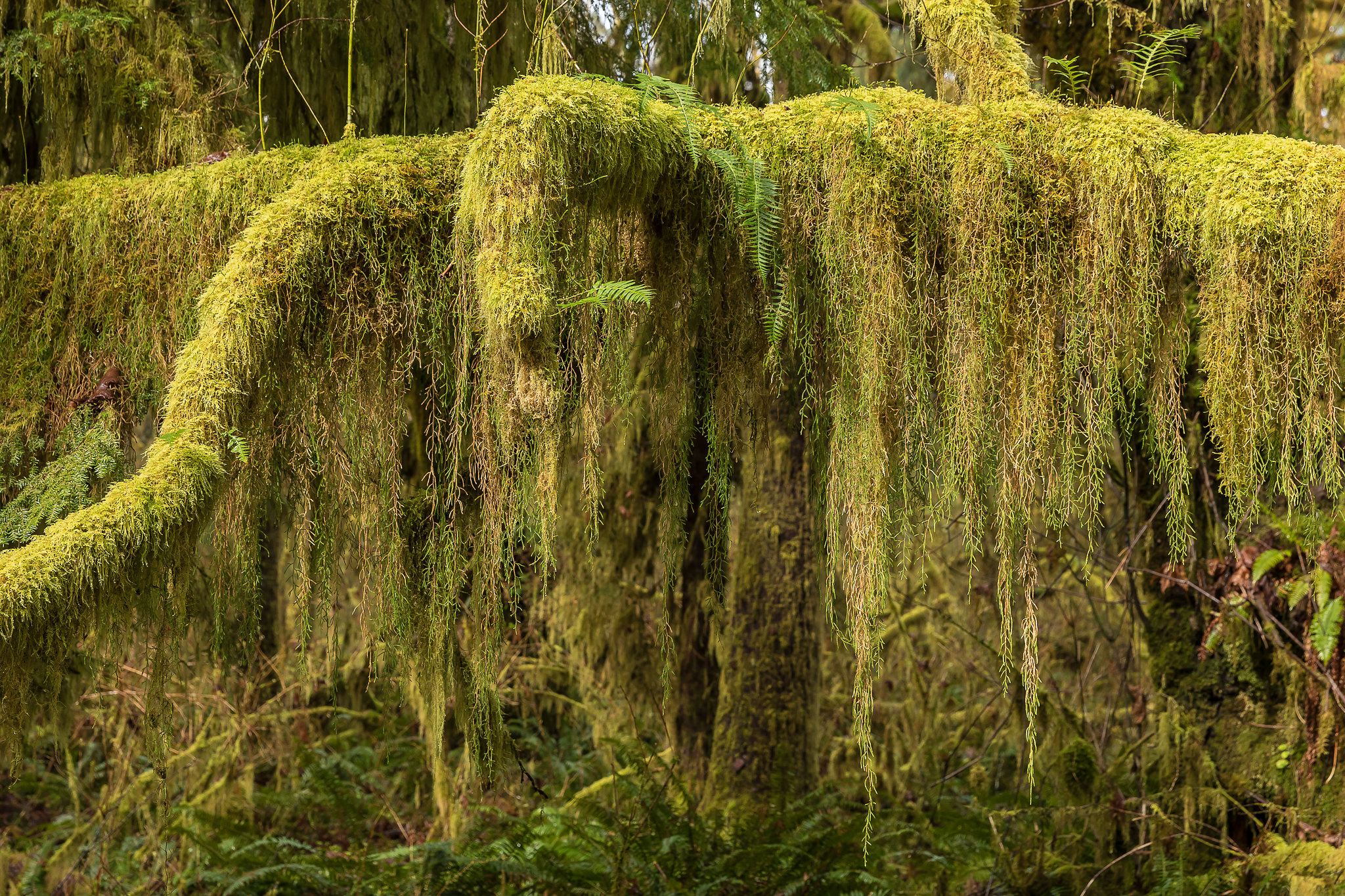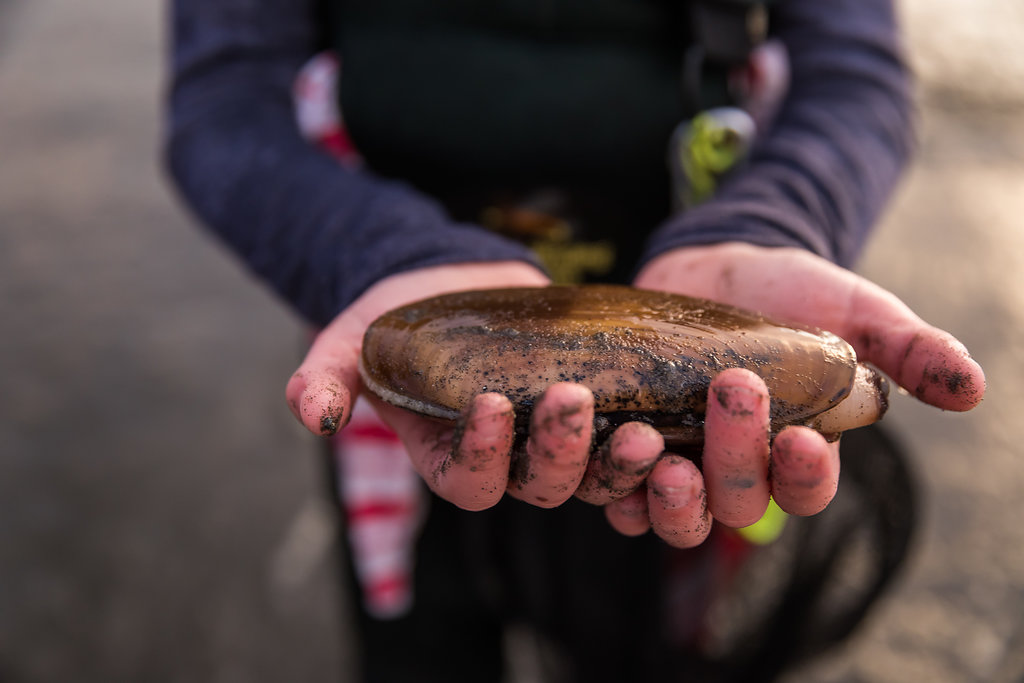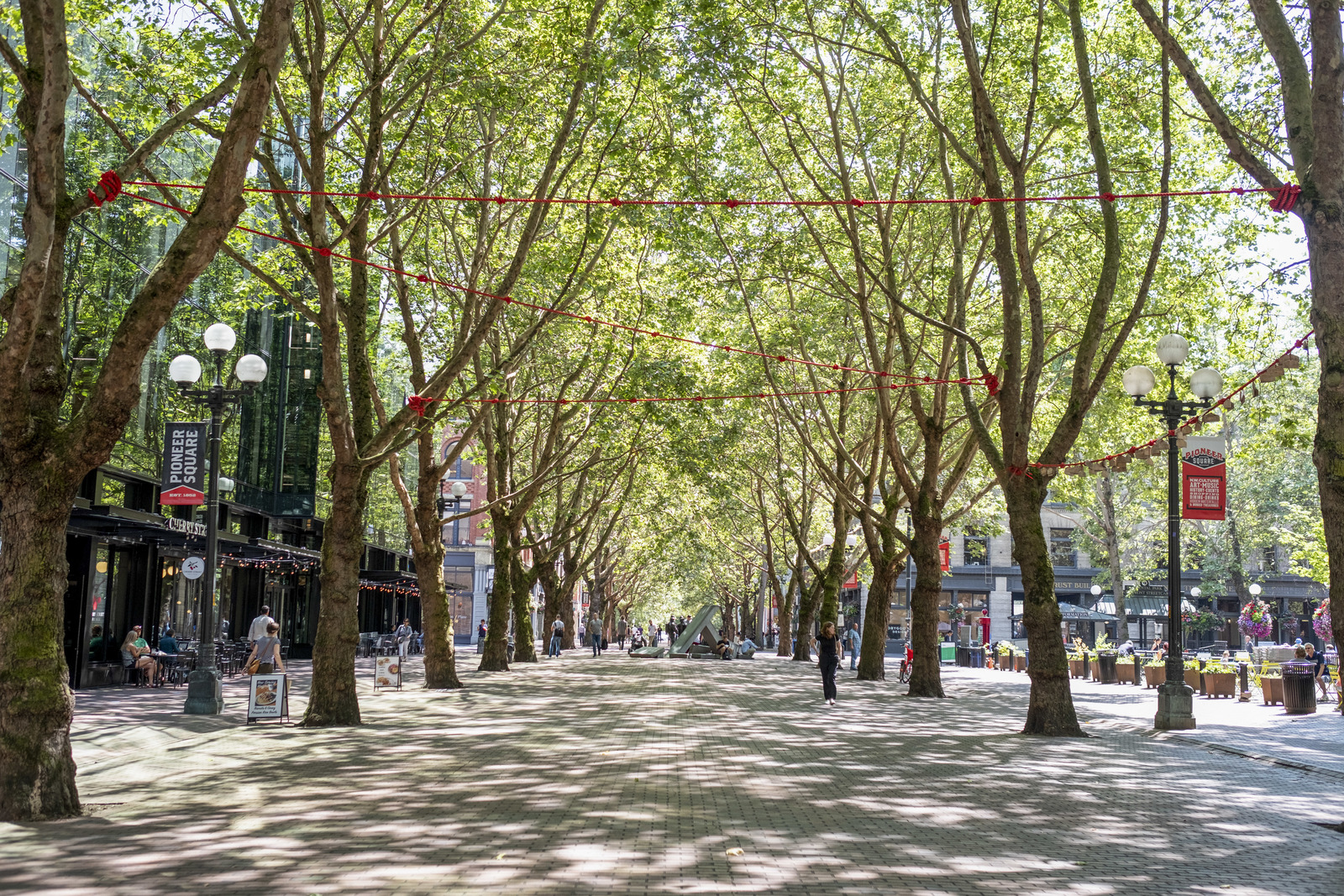The Nature Conservancy’s vision is of a world where nature and people thrive. Our work historically focused on protecting nature for nature’s sake. Now, we recognize that the well-being of nature and people cannot be separated and that conservation is inextricably connected to racial equity and social justice. At The Nature Conservancy in Washington, we aspire to diminish racism and bias while growing diversity and inclusion in order to safeguard the future of our planet. This is the right thing for people and for nature.
To do this, we must acknowledge our movement and organization’s past and present struggles with racism and equity and commit to a future in which we exemplify The Nature Conservancy’s values and do the best work possible to benefit nature and people.
Acknowledging Inequities
To create a more equitable future, we must acknowledge our past.
Indigenous peoples have been the stewards of the land, water and all living things since time immemorial. The Nature Conservancy’s work in Washington and around the world has often happened in direct relationship and sometimes conflict with the rights and interests of Indigenous peoples. We acknowledge that colonialism’s interruption of Indigenous rights and stewardship has been destructive to nature and people.
The conservation movement, including The Nature Conservancy in Washington, benefits from white-dominant culture and operates comfortably in an unjust, racist society. We have failed to focus on the inextricable connection between conservation and racial, social and economic justice. As a result, efforts to conserve nature did and sometimes still do harm people. This has led to exclusion, displacement and inequitable benefits. This contributes to the fact that in the United States, race is the most significant predictor of a person living near contaminated air, water or soil.
Bias and oppression are embedded in our society, systems, organization and within ourselves. By failing to acknowledge these inequities, we play a role in perpetuating them. For our work to succeed on behalf of people and nature, we can and must do better.
Our Commitments
Our vision of thriving people and nature can only be realized through a steadfast commitment to diversity, equity and inclusion in our management, conservation and business practices. This commitment involves constant learning, examining our power—and the role it plays in our work—focusing on listening, humility, relationships, sustained collaboration and learning from the mistakes we are sure to make. We commit to:
- Hold ourselves accountable for equitable and effective conservation that ensures racial, social and economic justice are achieved in strategies, practices and projects.
- Respect and support the rights and autonomy of Indigenous peoples by actively listening, learning and elevating their voices celebrating their rich cultures and histories.
- When invited, support communities most impacted by environmental challenges in growing their influence, impact and resiliency, recognizing that these communities already contain their own leadership, knowledge and strategy.
- Build partnerships and develop collaborations that reflect the diversity of people in the places we work. Invite dialogue with partners working on diversity, equity and inclusion to seek guidance and institute an anti-racist approach, knowing that we are imperfect and that we have a long journey ahead of us.
- Increase our institutional and staff cultural awareness and humility through consistent learning and actions. Support our staff in developing a deeper understanding of social-justice issues and how these impact our work.
- Evolve our staff and board to reflect the full diversity of Washington state and the communities we seek to serve. Strengthen our culture of inclusion and actively invite each other to belong. Institutionalize the capacity for diversity, equity and inclusion work at The Nature Conservancy in Washington.
- Invite dialogue with funders interested in advancing diversity, equity and inclusion. Philanthropy has a greater impact on our conservation work when we center varied perspectives in the conversation.
This statement is intended to be a living document that evolves as we deepen our understanding. We welcome input as we grow in this work and are thankful to those who guide us.
Definitions
In an effort to create shared understanding and differentiate among the three pillars of diversity, equity and inclusion and the concept of equality, we offer these definitions:
Diversity: Human differences, including but not limited to those based on race, culture, color, sex, gender identity, national origin, nationality, geography, age, ability or disability, sexual orientation, military or veteran status, socio-economic status, faith, political beliefs or other identities. Our definition also includes diversity of thought, ideas, perspectives and values.
Equality: The same amount of power, opportunities and resources are distributed to everyone with the assumption that everyone starts in the same place and has the same needs.
Equity: The full and appropriate access to power, opportunities and resources so that all people achieve their potential and thrive.
Inclusion: The act of fostering environments in which any individual or group can be and feel welcomed, respected, supported and valued to fully participate—an inclusive, inviting and welcoming climate that offers respect in words and actions for all people.
We kindly ask that other organizations and teams do not copy and paste any part of our equity statement as your own.
FAQs for the Washington Equity Statement
Looking to start your own equity statement? Why is an equity statement needed? Read our answers below.
-
The goal of the equity statement is to motivate change that results in more equitable outcomes. This change should show up in how The Nature Conservancy works both internally and externally. A reflective, idealistic and public equity statement is a meaningful way to add transparency and build commitment for this work. The statement demonstrates that we at the Washington Chapter are committed to living out our values of “commitment to diversity” and “respecting people, communities and cultures” by holding ourselves accountable, and we expect our partners to hold us accountable as well.
-
We ask that other organizations and teams do not copy and paste any part of our equity statement as your own.
We believe that each organization or team should craft an equity statement that is authentic to their Diversity, Equity, Inclusion and Justice (DEIJ) journey. We embrace the differences that make each organization or team unique and recommend allocating generous time and resources to find your DEIJ voice. The process of examining our organization’s past and connecting it with the present guides us toward the future we seek to create. This process was deeply personal and necessary. We continue to learn and grow as a team, and our equity statement is a true reflection of these efforts. We wish you the same should you embark on a similar journey.
One resource for developing your own equity statement is Sapna Strategies’s Activity to Examine Organizational Racial Equity Statements. To learn more about our process and other public-facing equity statements we examined, please refer to our other FAQ questions.
-
Equity statements, including this one, feature a keen focus on race because racial disparities exist in and impact all levels of society. Communities of color are disproportionately impacted by environmental challenges. In the U.S., race is the most significant predictor of a person living near contaminated air, water or soil. (Reference: Bryce Covert, “Race Best Predicts Whether You Live Near Pollution,” The Nation, February 18, 2016).
Science shows an “umbrella effect” when racial equity is addressed—meaning other marginalized groups experience a benefit from addressing race. So, while other types of disproportionate inequities exist, our initial focus on racial equity better prepares us to support other types of equity.
We define diversity very broadly including race, culture, color, sex, gender identity, national origin, nationality, age, ability or disability, sexual orientation, military or veteran status, geography, socio-economic status, faith, political beliefs, other identities and differences in thought.
-
The conservation movement has often benefited from white privilege and dominance. These articles offer details:
- Purdy, Jedediah. “Environmentalism’s Racist History.” (2015)
- Taylor, Dorceta E. “Race, Class, Gender, and American Environmentalism.” (2002)
- Merchant, Carolyn. "Shades of darkness: Race and environmental history." Environmental History 8.3 (2003)
- Melosi, Martin V. "Equity, eco-racism and environmental history." Environmental History Review 19.3 (1995)
- Villamagna, Amy, Beatriz Mogollón, and Paul Angermeier. "Inequity in ecosystem service delivery: socioeconomic gaps in the public-private conservation network." Ecology and Society 22.1 (2017)
TNC has a long history of protecting land in ways that provided unequal benefit to some people, often white, while creating hardship or harm for others such as Indigenous people. For example, land acquisition was at times done to protect views and access for wealthy land owners while cutting off access to others.
-
Economic disparity is an important issue and is intertwined with race, geography and many other issues. We specifically acknowledge the importance of economic justice in the equity statement.
(Reference: Race, Income and Environmental Inequality in the United States. Sociol Perspect, Liam Downey and Brian Hawkins)
-
Without action, an equity statement may quickly get dusty and not truly have an impact. Concurrently with the equity statement work, a staff team is creating a status report which summarizes our chapter’s DEI work to-date. The status report is likely to be drafted internally by Fall 2019.
An important next step after the equity statement and status report is the creation of desired outcomes, measurables, an action plan and a report card or similar tool that tracks our progress and builds accountability. This tool will be developed starting in Fall 2019 and may be public facing. Even with a tool to track progress, it’s vital we tackle the question of how to integrate this statement and commitment into our day-to-day work and into new and ongoing projects. We need everyone’s support and engagement to do this.
-
Some recent examples using a racial equity lens in our conservation strategy and science work are our work on Emerald Edge, climate action, forests and fire, and our cities/stormwater work. It will be vitally important to integrate the equity lens into all aspects of our work and continue to develop our equity lens in current work.
-
The Washington Board of Trustees plays a unique and vital role in shaping the equity statement and in integrating our commitments into all aspects of our work and culture. In addition to endorsing the equity statement, the board is engaging in workshops and being offered field experiences that ground them in the issues and how they impact our work, our staff and communities across our state. This learning sets the stage for being accountable for the commitments in the equity statement. While the equity statement has been staff driven, the board provided meaningful input that shaped the statement and most importantly has a strong leadership role in helping make the vision a reality.
-
Equity is the focus because diversity and inclusion aren’t possible without equity, the full and appropriate access to power, opportunities and resources so that all people achieve their potential and thrive. Having diverse staff, trustees, partners and supporters is important. It is also important for those groups to feel welcomed and empowered to bring their full breadth of talents, perspectives and skills to The Nature Conservancy.
-
The community of people with disabilities is diverse, with some members having an affinity to “ability” and others to “disability.”
Showing Up for Racial Justice notes the connection between ability/disability justice and race: “We want to create a movement for racial justice that not only pushes back against disability stereotypes of tragedy, inspiration or irresponsible burden but that also fiercely resists the powerful undercurrents about the ‘feebleminded,’ the illiterate or accented people of our lives. These ideas, birthed in ableism, grease the cogs of white supremacy and perpetuate white privilege.”
-
As we embarked on creating the equity statement, we read about DEI-related work to-date across TNC including TNC's 2013 Commitment to Diversity Initiative. We engaged other TNC staff who are leading DEI work in their respective teams and locales. At the heart of this statement are TNC’s core values of Commitment to Diversity and Respect for People, Communities and Cultures.
We also examined similar statements from other organizations including King County, City of Seattle, Code2040, Beautiful You Coaching Academy, Columbia Land Trust, the River Network, Camber Outdoors, Cascade Engineering, Camp Kesem, UNC School of Social Work, Starbucks, and Philanthropy Northwest, among others. We were aided by Avarna’s DEI Statement Worksheet. We are also in the process of consulting with external experts including Tribal representatives and leaders of other groups as well as TNC’s internal Global DEI team.
-
There are many environmental nonprofits and organizations with public-facing equity statements and commitments to diversity. Some notable organizations include:
Environmental Nonprofits
Washington Conservation Action
Private Corporations
Foundations & Philanthropic Organizations
Bill & Melinda Gates Foundation
David and Lucile Packard Foundation
William and Flora Hewlett Foundation
Local and Municipal Governments
For More Information
For additional questions, please contact us at washington@tnc.org.
We Can’t Save Nature Without You
Sign up to receive monthly conservation news and updates from Washington. Get a preview of Washington's Nature News email.




